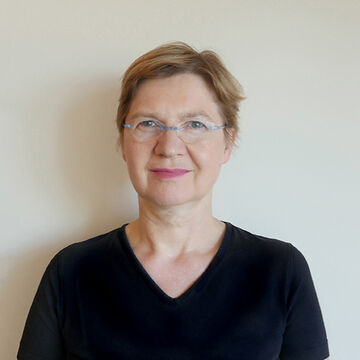

Adelheid Mers
Professor, Chair
Contact
Bio
From Düsseldorf, Germany. MFA Kunstakademie Düsseldorf. Additional study University of Cologne (Linguistics, Philosophy), University of Düsseldorf (German Literature, Pedagogy) and University of Chicago (Committee on the Visual Arts). Associate Professor, Dept. Chair (2011/12, 2013/14 - 2016/17), Arts Administration and Policy, School of the Art Institute of Chicago. Research interests bring together Cultural and Media Ecologies, Art Research and Performance Studies.
Adelheid Mers works through Performative Diagrammatics, a practice grounded in listening and reading that develops and deploys diagrammatic tools through elements of notation, installation, movement and video. Mers prefers to create live, laboratory settings at conference or exhibition venues, and consults with organizations. Recent partnerships are with the University of Music and Performing Arts, Vienna, and the Bauhaus University, Weimar. Local clients have been 3Arts and the South East Chicago Commission. Mers has published essays, edited a book, Useful Pictures, serves on multiple editorial boards and has recently served as juror for the NEA, and the Rauschenberg Foundation.
Personal Statement
Journeying through installation work to diagrammatic and performative procedures, my practice evolved through formal explorations of figure and ground while reading philosophy and linguistics. Extending to reflection of my own contingencies as a visual artist, this opened out to include the workings of arts organizations, with a growing curiosity of how artists and arts administrators work across their often invisible and unequally acknowledged competencies. It is a well-known observation that practitioners know more than they can, or feel the need to say. In part informed by conventions of studio conversation, for example forms of appreciative inquiry, iteration exercises, generative use of constraints, and perspective shifts, I interact with others (artists, students, workshop participants, general audiences) to provoke embedded values and embodied knowledge—action modalities—into showing themselves. This type of work can amplify personal and collective agency by rooting it in the force fields through which cultural ecologies operate. By extension, it enables those who do develop these roots to better design new structures, be they new habits, procedures, policies or organizations in support of more clearly perceived needs and abilities.
This work is political, in that it is not only deeply respectful of what others bring to the table, but also assumes that to amplify embodied ways of knowing allows them to rise up and dance.
My work translates into teaching in many ways. My courses deploy art research and performance studies in relation to cultural work in many roles (artist, designer, educator, theorist, curator, administrator), seek to empower students by attending to embodied knowledge and alternative literacies. I am greatly interested in and work through qualitative research methodologies, with special interests in Art Research and Grounded Theory.
With so much of my work being interpersonal, I always welcome participation in projects underway at my studio and elsewhere.
Video Work
Adelheid Mers, 2019
Performative Topologies Workshop documentation excerpt, Kunstverein Tiergarten, Galerie Nord, Berlin,
Video.
Adelheid Mers, 2019
Performative Topologies Workshop compilation for Kunstverein Tiergarten, Galerie Nord, Berlin,
360 Video and Custom Software.
Adelheid Mers, 2018
Performative Topologies Workshop, Staircase Bauhaus Weimar,
360 Video and Custom Software.
Adelheid Mers, 2016/17
Video record of participant engagement with diagrammatic whiteboard,.
Adelheid Mers, 2016/17
Video record of participant engagement with diagrammatic whiteboard.
Adelheid Mers, 2016/17
Video record of participant engagement with diagrammatic whiteboards.
Thesis Advisees
Rebecca Haley (2021), “New Imaginations for the Role of the Museum Trustee”